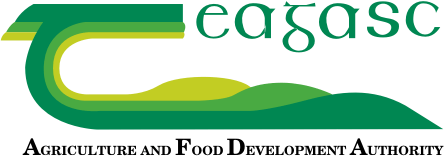13 June 2023
Watch: Higher milk and solids yields from grass-white clover swards at Moorepark

Aine Murray’s research is looking at the herbage and milk performance of three different groups of cows, comparing grass-only swards to grass/clover swards at different nitrogen rates.
Aine will speak about her work at the Teagasc Moorepark Open Day on July 4th.
A number of farm systems research experiments have been undertaken in recent years comparing grass-only and grass-white clover grazing systems. These experiments all compared the grass and milk production from grass-only swards receiving 250kg N/ha and grass-white clover swards receiving 150kg N/ha.
These experiments have shown very positive results in terms of reducing nitrogen fertiliser on grass-white clovers, whilst maintaining similar total grass dry matter (DM) production as grass-only swards fertilised with higher levels of nitrogen fertiliser. White clover possess the ability to biologically fix atmospheric nitrogen into a plant usable form (i.e. nitrate) to facilitate grass production.
View this post on Instagram
White clover is a nutritionally-superior feed than perennial ryegrass, as it promotes higher dry matter intakes due to its lower neutral detergent fibre content. The grass DM production from three of these systems experiments in both Moorepark and Clonakilty where grass-white clover swards receiving 100kg less nitrogen fertiliser produced, on average, only 0.4t DM/ha less than grass-only swards (14.1 vs 14.5t DM/ha, respectively).
Cows grazing grass-white clover swards at Moorepark and Clonakilty had higher milk yield (+1.2kg/cow/day) and milk solids yield (+0.11kg/cow/day) compared to those grazing grass-only swards. The milk constituents were similar (fat and protein %), and so the increased milk solids yield was as a result of increased volume of milk produced due to higher dry matter intake.
In addition, in 2020 and 2021, a subset of paddocks had zero N exclusion plots included (5m2) in the grass-only and grass-white clover paddocks. These plots were fenced, received zero N fertiliser or slurry and were not grazed. The plots were mechanically harvested at the same time as the paddock was grazed by dairy cows and herbage yield and N content were measured. Zero N grass-only plots yielded 7.5t DM/ha and had an N yield of 193kg/ha, whereas the zero N grass-clover plots yielded 10.3t DM/ha and had an N yield of 296kg/ha, indicating N fixation of 104kg N/ha per year.
To find out more about this research and much more come to the Moorepark Open Day on July 4th 2023.
Follow MooreparkOpenDay23 on Instagram for more updates!
